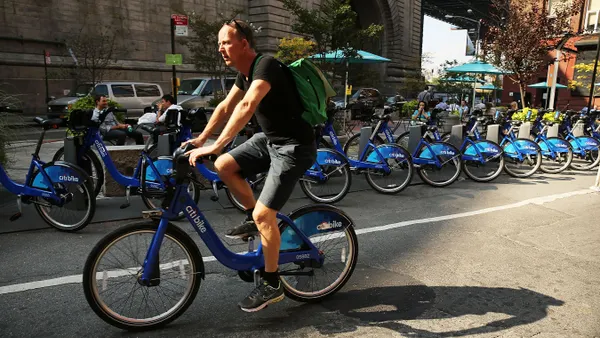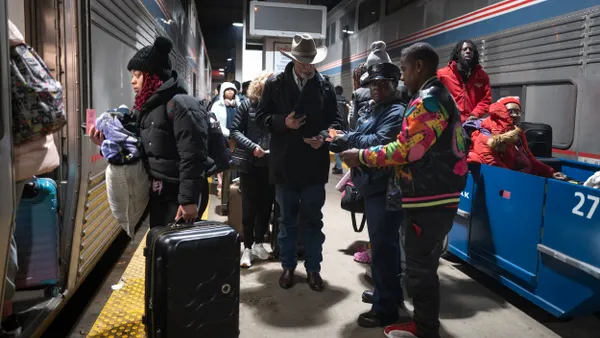Dive Brief:
- May Mobility unveiled details about the wheelchair-accessible version of its autonomous shuttle, which the company has been testing at its Ann Arbor, MI shop and in Columbus, OH. The company expects to bring the vehicles to its existing service networks in Columbus, Providence, RI and Grand Rapids, MI after some design changes.
- The shuttles have a ramp for entry and exit, and mechanisms to secure wheelchairs inside the vehicle. Based on feedback from tests in Columbus, May Mobility says it will redesign the ramp to be more gradual, and add rubber bumpers so that it touches the ground.
- Separately, Lyft announced this week that it would partner with First Transit to bring more wheelchair accessible vehicles (WAVs) to San Francisco and Los Angeles, which users can request through the Lyft app.
Dive Insight:
In a Medium post, May Mobility's Chief Operating Officer Alisyn Malek said the company thinks of "everyone as our passenger," as part of its goal to make cities "safer, greener and more accessible for all." That’s why they've started from the ground up in designing a wheelchair-accessible version of the autonomous shuttles it has been testing in several cities. The shuttle recently went through pilot testing in Columbus to gather on-the-ground responses from wheelchair users, to ensure it can be used effectively.
As new mobility options come online, there's been concern that they could leave people with disabilities behind. That’s especially true of autonomous vehicles (AVs), which have great potential to increase independence but must be designed to accommodate all users.
Ride-hailing services like Uber and Lyft have been in the spotlight for accessibility, with several lawsuits charging that the platforms have not done enough to make WAVs available with reasonable wait times. Both companies have focused more attention on accessibility; Lyft even announced this week that it would partner with AV company Aptiv and the National Federation of the Blind to pilot autonomous rides for visually impaired passengers.
The partnership with First Transit in the two California cities will be a positive step to get more WAVs on the network, although advocates say they’re waiting to make sure the pilot meets its full potential. Stuart Seaborn, an attorney with Disability Rights Advocates who has sued both Uber and Lyft over accessibility issues, told Smart Cities Dive that Lyft could involve disabled community members to get a better sense of where and when WAVs are needed, and should explore incentivizing WAV drivers if the vehicles are still not available.
"The end goal is really to make it as close as it can be to an on-demand service," Seaborn said. "We're not asking for perfection … but our hope is that these companies with huge market power can be aware of the needs and come up with a combination of solutions that are more feasible."









